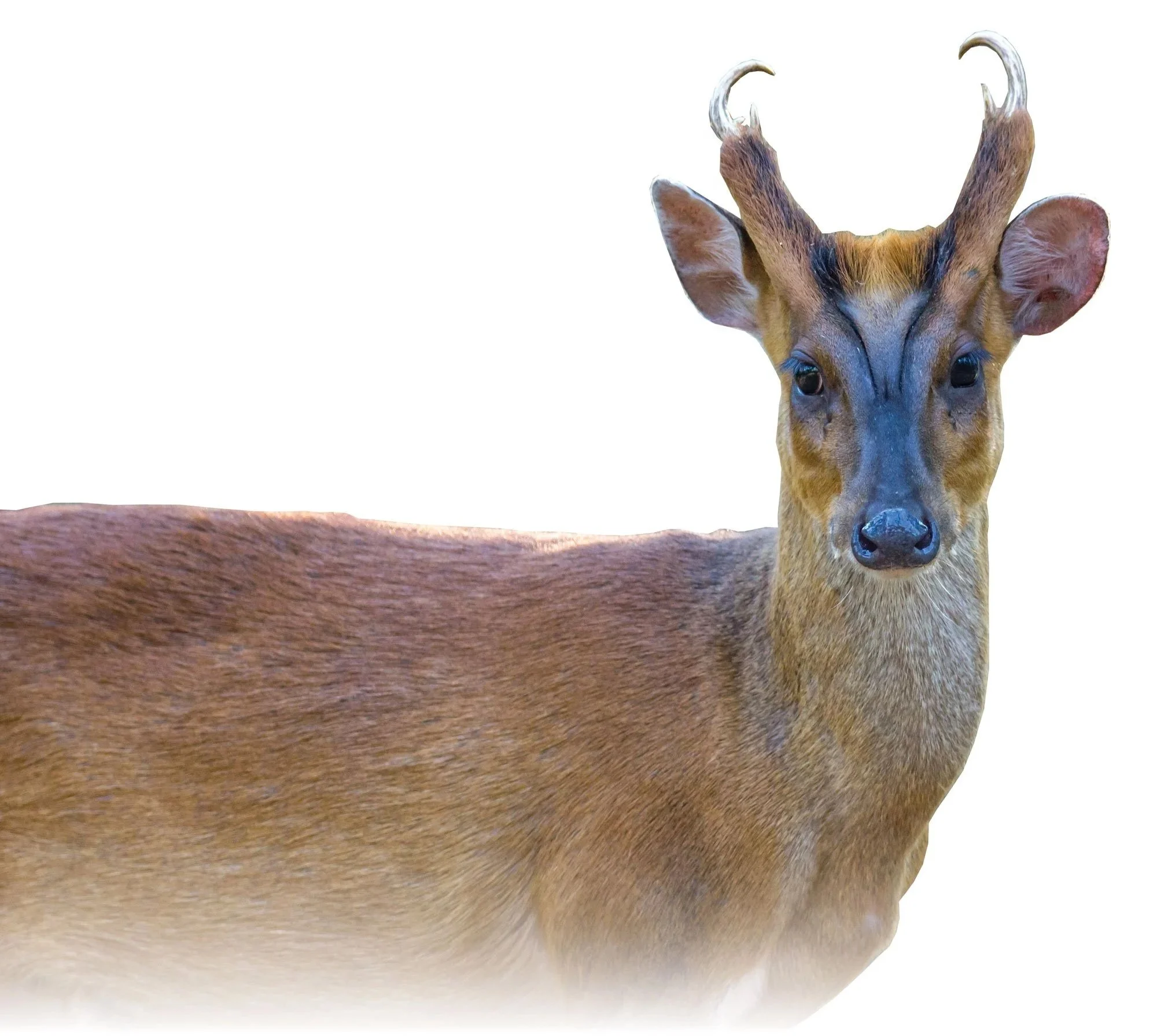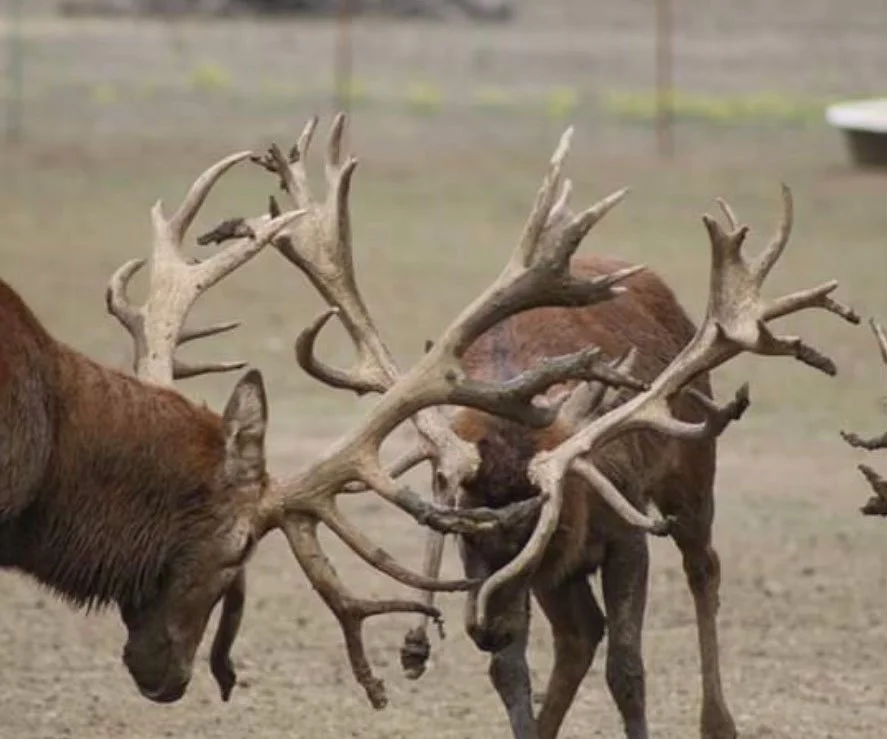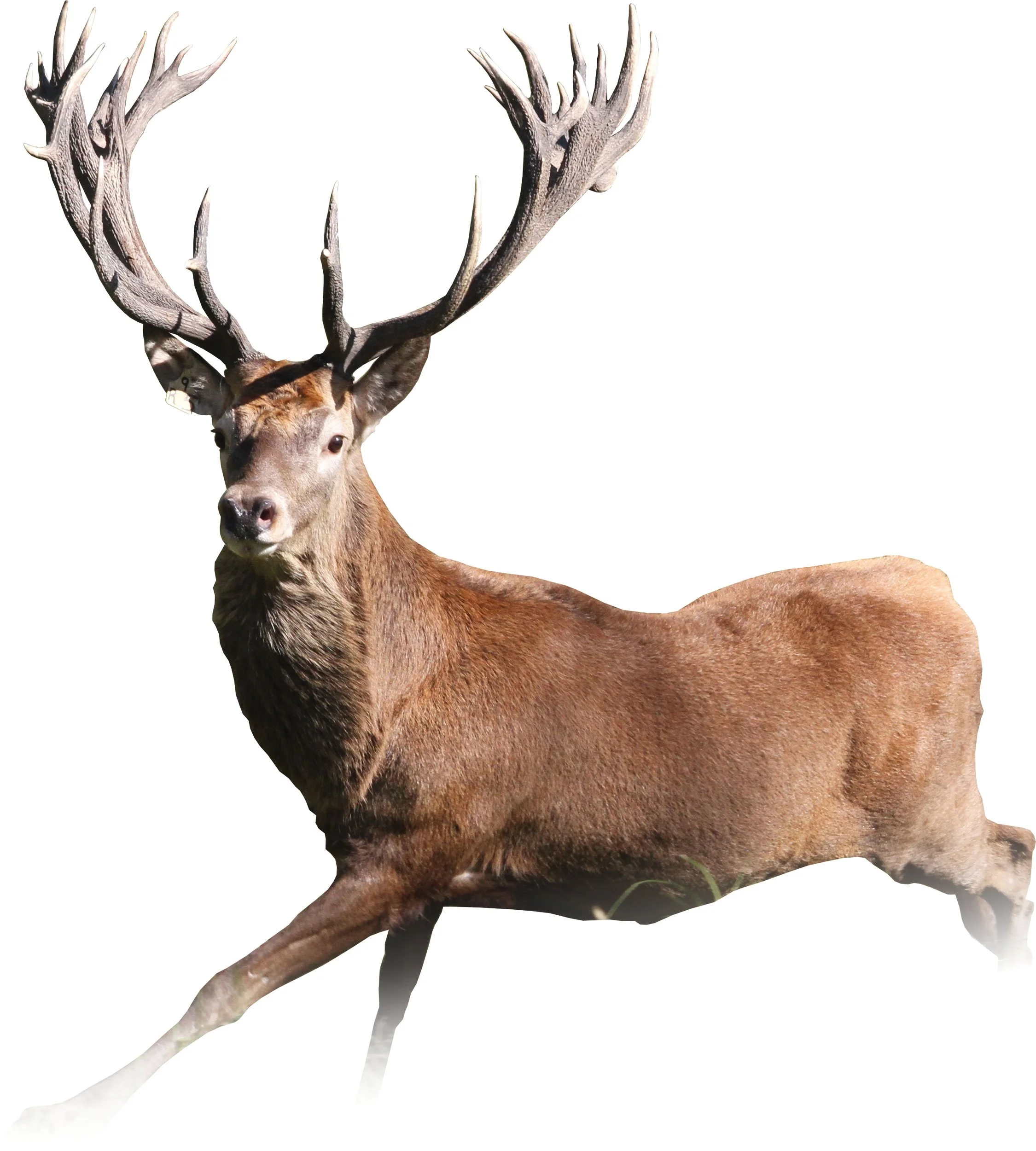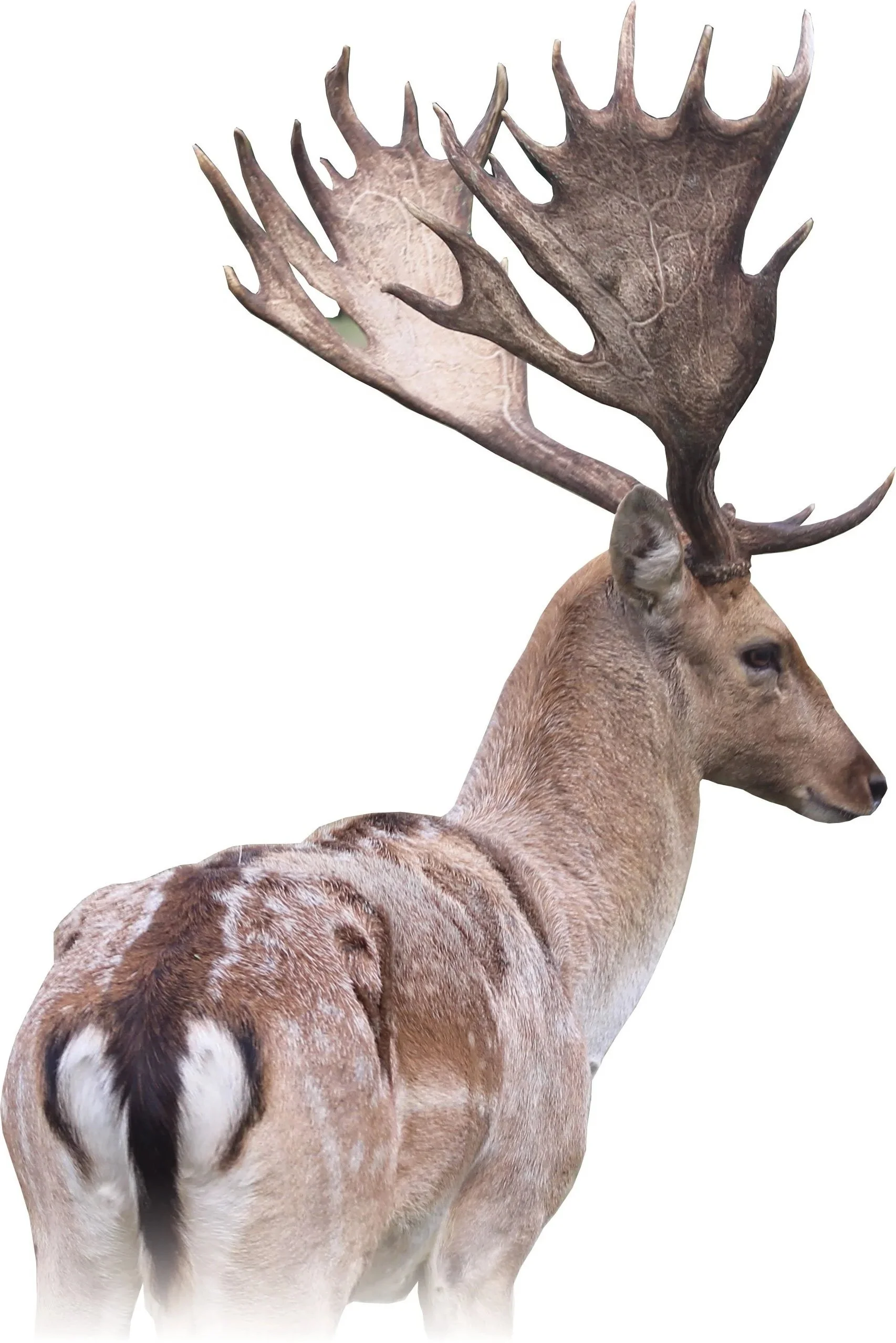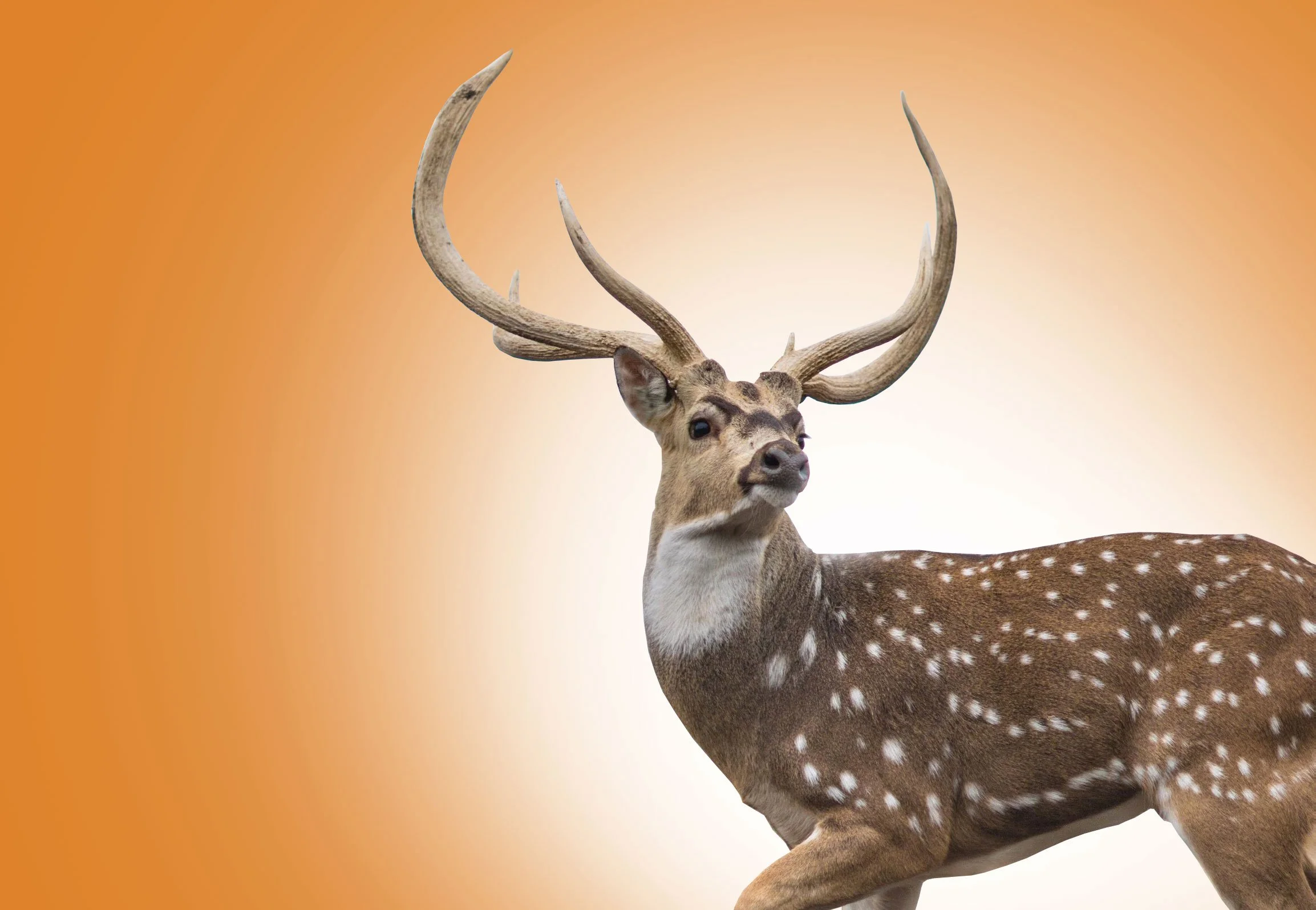
Antlered Ruminant Nutrition
Antlered Ruminant (Deer) Nutrition
When used as a commercial feed ingredient Nature’s Formula IGF-1, must be declared as a feed additive supplement for ruminants (including deer) in light of additional accreditation's from advanced nutritional studies on IGF-1 serums activities and the stimulation of antler tissue development
Nature's Formula IGF-1 feed additive for deer and wildlife, high concentrations of Vitamin A, are structured to duplicate a platform of key components found in green vegetive sources such as alfalfa, replicating a source of IGF 1 serums with high concentrations levels of vitamin a in ruminants diets for optimum antler tissue growth.
Introducing Nature’s Formula IGF-1 Premix
NB-A20268B0
All Species Ruminant Supplement
Our Formula is Copper Free
Nature’s Formula IGF-1 feed additive is copper free and safe for all biological groups of copper sensitive ruminants. Please remember to observe the copper levels in fee whenever numerous species of wildlife like deer and antelope, cohabitating with sheep, camels, llamas, alpacas and other animals that suffer from copper toxemia.
Studies have shown that serum IGF-1 concentrations are significantly elevated during the seasonal transition or growth phase, positively correlating with antler frame growth rate and that IGF-1 plays the crucial role of stimulating antler development in all species of deer.
Deer need a minimum of 65ppm Copper in their diet. Be sure and ask your feed mill nutritionist to add their recommended amount of copper to your deer feeds.

Influence of IGF-1 in
Antler Tissue Development
Scientific Research has determined that the IGF-1 is the hormone that plays a vital role in antler cell growth and development. In deer, Insulin like growth factors are known to be a key factor in the rapid growth of velvet antlers.
Elevated IGF-1 Levels:
Clinical trials conducted on the antler growth period, shows deer exhibit significantly higher levels of IGF-1 in their serum compared to other times.
Correlation with Antler Size and Growth:
Studies have found a positive correlation between circulating IGF-1 levels and antler development, as well as antler growth rate. This means that deer with higher IGF-1 levels tend to have longer and faster-growing antlers.
IGF-1 as an Antler-Stimulating Hormone:
Based on these findings, IGF-1 is the hormone that stimulates antler growth in deer.
Beyond Antler Growth:
IGF-1 is also associated with body weight gain during antler growth, suggesting its role in overall growth and Insulin-like growth factors (IGFs) influences in deer reproduction.
Insulin-like growth factor-I (IGF-I) significantly influences deer reproduction, especially in male deer.
Males
Testosterone and Antler Growth:
Studies show a positive association between IGF-I levels, serum testosterone, and antler size in male fallow deer, Red deer and white-tailed deer.
Leydig Cells and Steroidogenesis:
IGF-I can directly stimulate the Leydig cells, which produce testosterone.
Potential for Increased Reproductive Success:
By potentially increasing testosterone levels and influencing antler size, IGF-I can impact reproductive behavior and success.
Females:
Puberty:
Clinical trials show that the Increased levels of plasma IGF-I concentrations are linked to the onset of puberty in Fallow deer, regardless of dietary energy intake during the previous winter.
Sex Ratio:
While increased dietary energy in winter doesn't impact pregnancy rates, it can alter the sex ratio in Fallow deer with higher energy intake linked to a greater proportion of male fawns.
Influence of nutrition:
Nutrition significantly affects IGF-I levels in deer. High-quality diets can increase IGF-I, enhancing growth and reproductive success. In conclusion, IGF-I is a a crucial hormone influencing deer reproduction, particularly male breeding success with increased conception rates and the onset of puberty in females. Factors like age and nutrition should be considered when studying the influence of IGF-I on deer reproduction.
Overall view
In cervids (deer, elk, moose, etc.), Insulin-like Growth Factor-I (IGF-I) significantly influences reproduction in deer reproduction. The influence of IGFs on cervid reproduction and reproductive health IGF-I directly stimulates gonadotropin-induced testosterone formation in Leydig cells, which are involved in the production of male hormones like testosterone. IGF-I concentrations also show a positive association with serum testosterone levels during the breeding season in male deer.
Ovarian Function and Oocyte Maturation:
IGF-I is involved in regulating ovarian function, particularly follicular selection. It acts as an amplifier to the hormonal action of gonadotropins, according to ScienceDirect.com. IGF-I also strengthens the bond between granulosa cells, theca cells, and interstitial cells, which is important for follicular development and aids in oocyte maturation.
Early Embryo Development:
IGFs play an essential role as an antiapoptotic factor in reproduction, particularly inovarian function and early embryo development. It helps prevent apoptosis in granulosa cells and ovarian follicles, promoting the survival and growth of oocytes. IGFs also contribute to the creation of a receptive environment in the uterine lining for embryo implantation, increasing the chances of successful pregnancy.
Estrus Cycle and Ovulation:
While the direct link between IGFs and the estrus cycles IGF-I plays a role in the proper occurrence of ovulation in mammals, according to a 2023 ScienceDirect article. In some species, higher IGF-I concentrations after estrous cycle synchronization have been linked to higher conception rates and lower embryonic death rates.
In summary, IGF-I is an important hormone that influences various aspects of cervid (deer) reproduction. It impacts both ovarian function and oocyte maturation in females, and is crucial for early embryo development and successful pregnancy outcomes.
Antlered Ruminant Formulations
This seasonally adjusted ration is for increased fertility in natural selection breeding, fetal programming for in vitro fertilization, artificial insemination, embryo production and embryo transfers.
Mother Nature provides a host of resources in the fall and winter months from September through March for all species of deer with natural sources of protein and fat, for replenishing the lost muscle and fat it does after weaning fawns, throughout the breeding cycle and into the springtime, with optimum body mass when the fawns are born.
This same nutritional system provides something totally different for buck deer by providing them with the protein and fat to maintain as much body fat and muscle mass as possible during the fall and winter months, allowing the growth factors to focus on antler development during the seasonal transformations the periods, instead of tissue restoration that occurs during the spring and summer months in all species of antlered deer
Spring & Summer Formula
16% Protein - 3% Fat, in Pelleted or Textured Feeds fortified with 10 Pounds of Nature’s Formula IGF-1 feed additive.
Fall & Winter Formula
20% Protein - 3% to 6% Fat, in Pelleted or Textured Feeds fortified with 12 Pounds of
Nature’s Formula IGF-1 feed additive and a guaranteed analysis of
33,000 international units Vitamin A
350 international units Vitamin D
90,000 international units Vitamin E
5 mg Biotin Vitamin B7
100 Mg Folic Acid Vitamin B9
100 ppm (Min) Cobalt Carbonate
360,000 ppm Organic Selenium
8% Zin-Pro Organic Manganese
8% Organic Zinc.
Fall & Winter Deer Breeding Formula
Formula Code: #DBF-20-6
20% Protein - 6% Fat in Pelleted or Textured Feeds, fortified with 12 Pounds of Nature’s Formula IGF-1 feed additive and a guaranteed analysis of:
33,000 international units Vitamin A
350 international units Vitamin D
90,000 international units Vitamin E
5 mg Biotin Vitamin B7
100 Mg Folic Acid Vitamin B9
100 ppm (Min) Cobalt Carbonate
360,000 ppm Organic Selenium
8% Zin-Pro Organic Manganese
8% Organic Zinc.
More Resources
NATURES FORMULA IGF-1 PREMIX INFOGRAPHIC
NutraBlend

Designed to Fortify from Conception to Consumption
Nature’s Formula IGF-1 is manufactured and distributed by Nutra Blend LLC, and is readily available to any independent feed manufacturer in America. It is supported by the scientific focus on green vegetative components that stimulate growth factors in ruminants, optimizing fortification to the DNA blueprint of each animal.

